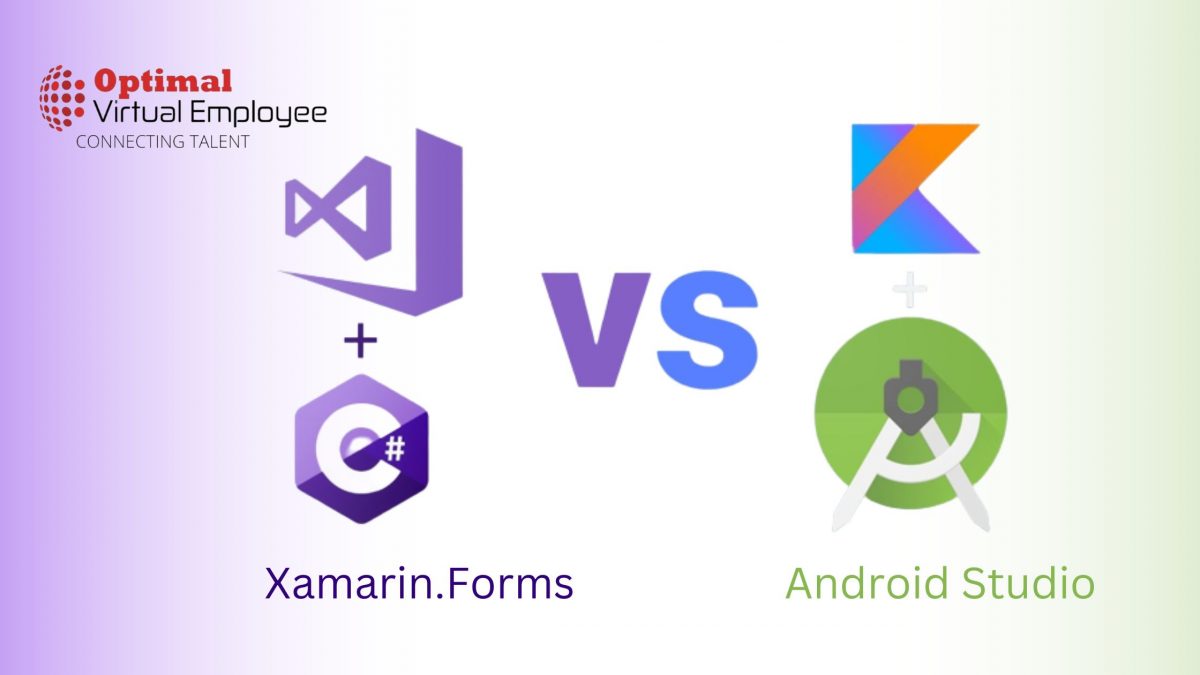An Integrated Development Environment (IDE) facilitates the software development process. There are several reasons to use an IDE; an IDE unifies everyday tasks developers perform, such as debugging, revising source code, version control, and designing executables into a single environment. They can also enhance developer productivity by facilitating multiple lines of code into one single application.
In this blog, we shall run a side-by-side analogy between Xamarin.Forms vs. Android Studio.
-
Xamarin.Forms
Cross-platform mobile app frameworks are one of the popular trends in mobile app development. With cross-platform development frameworks, coders can craft powerful, multi-featured mobile apps compatible with iOS, Android, and Windows devices. Xamarin is one of those frameworks.
Xamarin is an excellent framework for C# developers as Xamarin uses C# as its codebase, they also use .NET libraries while designing mobile apps for both iOS and Android platforms. Xamarin.Form is a protracted feature; Xamarin Developers can find the Xamarin plugin on both the IDEs furnished by Microsoft, i.e. Xamarin Studio for Mac and Visual Studio for Windows. To build an Android app, you must use Xamarin.Forms.
With Xamarin.Forms, programmers can access built-in controls, pages, and layouts to create and develop improved mobile apps from a single source Application Programming Interface (API).
Features Of Xamarin.Forms
- Fast Renderers: Fast renderers are now empowered in Xamarin by default, primarily benefiting Android developers. It has an optimized renderer that eradicates the need for wrapping the view group. So, if you wish to go back to using the legacy renderers, you can use the below flag.
global::Xamarin.Forms.Forms.SetFlags(“useLegacyRenderers”);
- Shell: Tabs are now more straightforward with the latest version of Xamarin.Forms. Shell builds upon the fast renderer we mentioned before,as everything in the shell uses the same pattern.
The latest version of Xamarin offers the following add-ons in an app:
- The new Xamarin 4.2.0 is filled with extra features like a visual state manager, flex layout, style sheets, and right-to-left support that help build the feature-rich application.
- IntelliSense engine of WPF and UWP backs the new Xamarin that assists your app with improved matching, binding completion, resource completion, and markup extension completion.
- The engine plays a dual role as, along with backing Xamarin, it also strengthens light bulb suggestions, linting, and code navigation.
- The new Xamarin 4.2.0 alerts you with the notice to download SDK in the background while you initiate an android project with uninstalled SDK; that’s an advanced android SDK Management.
- Ready to use updated Android Project Templates.
- The new version does not stop here but helps build smaller applications, reduces consumption memory, and facilitates faster application startup.
Pros Of Using Xamarin.Forms
- Easy Prototyping: Prototyping can be a tedious task for coders. But with Xamarin.Forms, programmers can effortlessly prototype complex mobile apps.
- With Xamarin, developers can update and make changes to the app relatively quickly as corresponded to other frameworks. With native, the process is the same; only that it is replicated for each app version.
- Apps that are created with Xamarin.Forms can access all the hardware functionalities of your device, such as the NFC, sensors, etc., just like a native app.
- Xamarin. forms allow developers to design UI in two ways. Developers can build UI wither with the assistance of Extensible Application Markup Language (XAML) or they can use the default API provided by Xamarin to create UI views entirely with source code.
- With Xamarin.For forms, developers can use combined layouts as a container for views and other containers.
-
Android Studio
Android studio is a product of Google and is the official IDE for Android development. It is a one-stop shop for developing applcations for Android Wearables, Android Phones, Android TV, tablets, and Android Auto. Also, it’s highly probable that its assistance will never stop as long as Android apps exist.
Features Of Android Studio
- Firebase and Cloud integration: Android studio provides extra support for coders to connect your app with Google cloud and added services from Google like Authentication, Notifications, Analytics, and more.
- Instant Apps for App Bundles: App sizes always annoy us during a download. This is why Google has added support for app bundles; it allows you to set specific device configuration requirements for dynamic feature modules to be downloaded automatically during the installation of app. You can specify conditional delivery based on hardware traits such as OpenGL Versions, Support for AR(Augmented Reality), API Level, and user country.
- APK Analyzer: Programmers can discover APK Analyzer as a handy tool in Android Studio. It enables developers to audit DEX files, inspect the size of each component, and also enables them to preview packaged assets.
Pros Of Using Android Studio
- With this IDE, developers can smoothly build apps for all Android devices, like tablets, mobile phones, wearables, Android Auto, and Android TV.
- Since Android Studio is considered the official IDE for building Android apps, developers can expect excellent community support.
- Android Studio even offers native support for GCP(Google Cloud Platform).
- Google has made Source Control a hassle-free procedure in Android Studio since it comes with Built-in GitHub integration. Still, it aids other source control systems such as Google Cloud Source Repositories.
Conclusion
From the above comparison, it is very hard for us to arrive at an appropriate conclusion since we’ve got two unique platforms for mobile app development. Nonetheless, we strongly suggest you to choose Xamarin as the core tool for your desired mobile app development.









